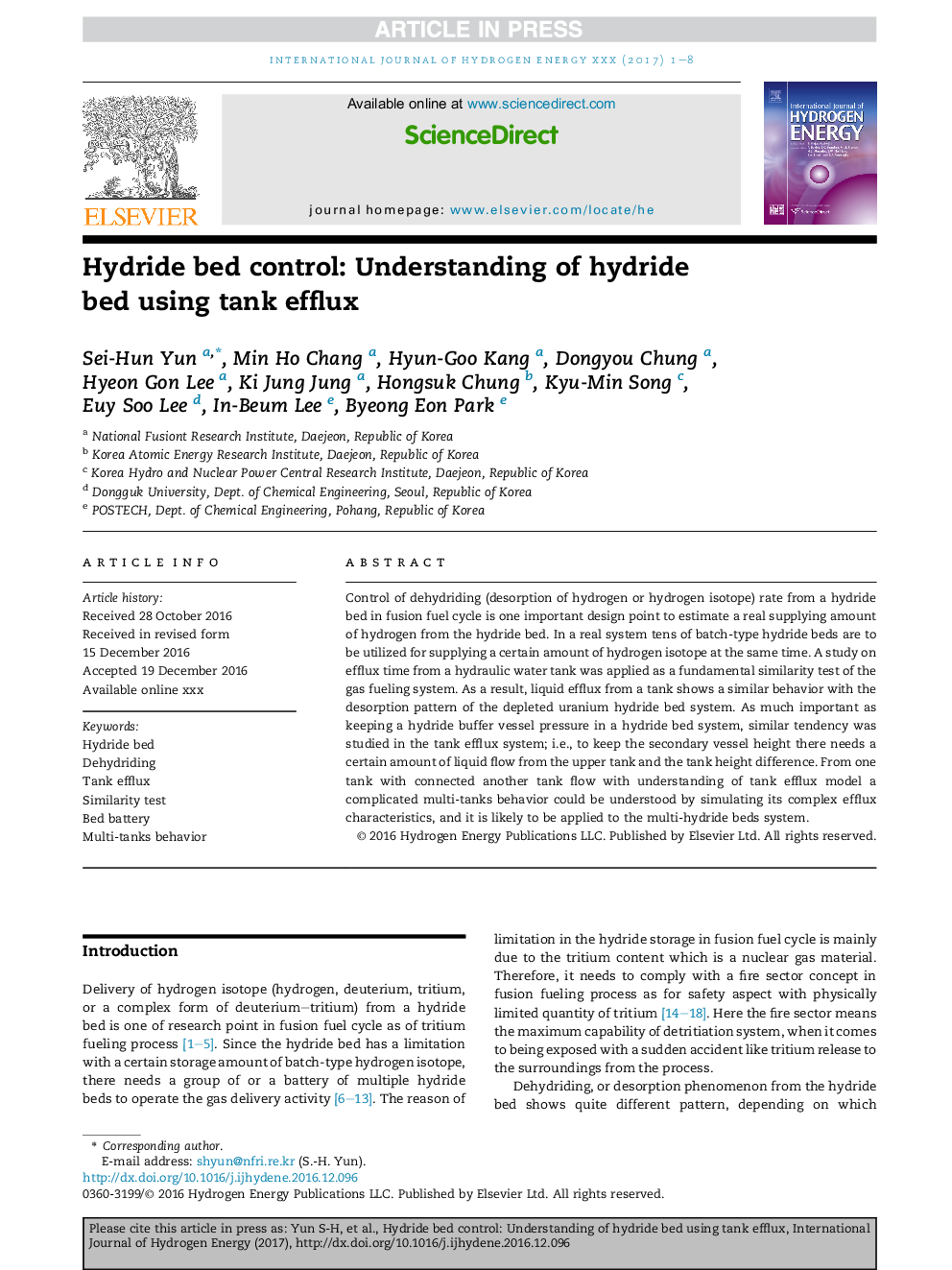| Article ID | Journal | Published Year | Pages | File Type |
|---|---|---|---|---|
| 5148292 | International Journal of Hydrogen Energy | 2017 | 8 Pages |
Abstract
Control of dehydriding (desorption of hydrogen or hydrogen isotope) rate from a hydride bed in fusion fuel cycle is one important design point to estimate a real supplying amount of hydrogen from the hydride bed. In a real system tens of batch-type hydride beds are to be utilized for supplying a certain amount of hydrogen isotope at the same time. A study on efflux time from a hydraulic water tank was applied as a fundamental similarity test of the gas fueling system. As a result, liquid efflux from a tank shows a similar behavior with the desorption pattern of the depleted uranium hydride bed system. As much important as keeping a hydride buffer vessel pressure in a hydride bed system, similar tendency was studied in the tank efflux system; i.e., to keep the secondary vessel height there needs a certain amount of liquid flow from the upper tank and the tank height difference. From one tank with connected another tank flow with understanding of tank efflux model a complicated multi-tanks behavior could be understood by simulating its complex efflux characteristics, and it is likely to be applied to the multi-hydride beds system.
Keywords
Related Topics
Physical Sciences and Engineering
Chemistry
Electrochemistry
Authors
Sei-Hun Yun, Min Ho Chang, Hyun-Goo Kang, Dongyou Chung, Hyeon Gon Lee, Ki Jung Jung, Hongsuk Chung, Kyu-Min Song, Euy Soo Lee, In-Beum Lee, Byeong Eon Park,
